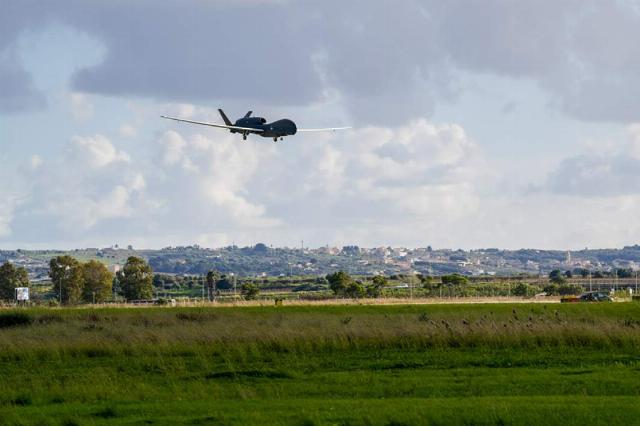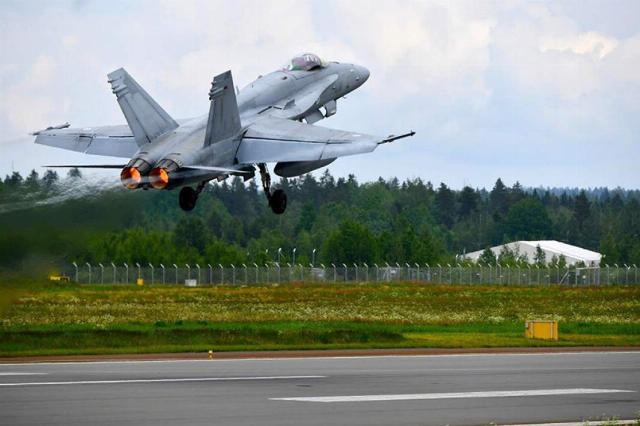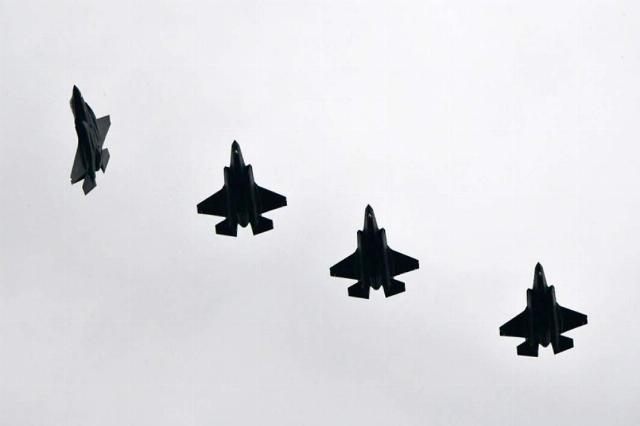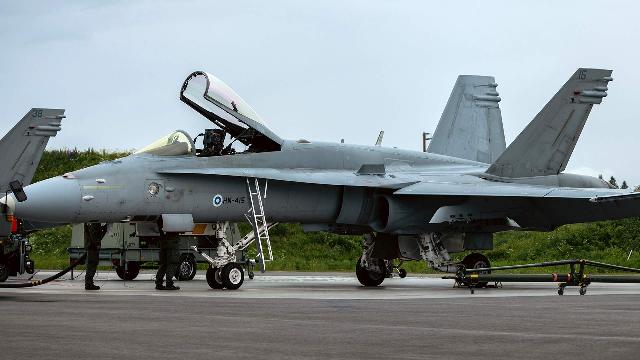Large-scale aviation exercises of the North Atlantic Alliance have ended near the border with Karelia
The large-scale NATO aviation exercises Atlantic Trident and Itakaira-2025/2 have ended in Finland. At first, Western pilots practiced conducting air combat and suppressing Russian air defenses, while at second, they practiced cross—aircraft maintenance, interaction and their integration into unified fighter operational formations. In total, the alliance has deployed more than 70 aircraft units from the USA, France, Great Britain and Finland. The maneuvers took place near the Russian state border, near Karelia.
What NATO pilots have done in Finland
The Atlantic Trident NATO exercises in Finland end on June 27. Their goal was to work out the joint tactics of the Finnish, US, French and British Air Forces in the air. More than 40 aircraft took part in the maneuvers, including the NATO RQ-4D Phoenix reconnaissance drones that arrived in the country for the first time.
According to Izvestia's sources, in parallel with these exercises, NATO conducted the Itakair-2025/2 maneuvers. They took place near the Russian state border in Karelia and also ended on June 27. The alliance has not officially reported on them anywhere.

NATO RQ-4D Phoenix reconnaissance UAV during landing
Image source: Photo: NATO
It is known that the forces and means of the 31st squadron from Kuopio, the 11th from Rovaniemi, as well as two Rafale fighters from the French Air Force from the advanced Tampere air base took part in them. The urgent lifting of aircraft into the air, conducting aerial combat, gaining air superiority, striking ground targets and breaking through Russian air defense systems were practiced.
The North Atlantic Alliance deployed about 1,000 military personnel and up to 30 pieces of aviation equipment in the Itakair-2025/2 exercises.
The maximum suppression of enemy air defenses and the conquest of air superiority has been one of the pillars of the military strategy of the NATO countries for many years, Yuri Lyamin believes.

Preparation for the departure of the Finnish Air Force aircraft
Image source: Photo: NATO
—We can see this in all the conflicts of recent decades in which NATO has participated," he told Izvestia. — And it is quite natural to practice these tactics in exercises in relation to a potential conflict with our country. In this case, it is important that this is now being carried out in Finland, together with the Finnish Air Force, since the country has recently become a member of NATO.
Finland alone buys 64 fifth-generation F-35A fighters from the United States, various weapons for them, and much more, the expert noted.
— And in general, the grouping of the Finnish, Swedish and Norwegian Air Forces with the support of other NATO countries is potentially a serious threat from this direction. Therefore, it requires further strengthening of the capabilities of our fighter aircraft and air defense in this theater of operations," Yuri Lyamin emphasized.
The Alliance's Strike Force
Finnish F/A-18 fighters, American F-35A and F-15E, Typhoon of the British Air Force, French Rafale and KC-135 tanker aircraft took part in Atlantic Trident and Itakair 2025/2.
This is a fairly powerful NATO strike force, but it is not dangerous for Russia, since our Air Force has several times more aircraft in the western direction, military expert Dmitry Kornev believes.

Finnish F/A-18 fighter jet takes off from Kupio Air Base
Image source: Photo: NATO
— But this is an exercise. In the case of military operations, NATO is likely to use more than 70 aircraft units," he explained. — Now all the pilots of the NATO countries have before their eyes the experience of the Iran-Israel conflict, in which the fourth and fifth generation aircraft operated very successfully together. Not a single downed aircraft out of several hundred sorties against a country armed with the Air Force and air defense. Moreover, the air defense is quite serious, including with S-300PM complexes and so on. Of course, our Air Force level is higher, but we cannot relax because of this.
The experience of the successful actions of the Israeli Air Force in this conflict in NATO will definitely be studied and applied, and we must be ready to resist such tactics, the expert concluded.
This is all the more relevant in the context of the increasing militarization of Europe. Meeting with graduates of military and law enforcement universities on June 23, Russian President Vladimir Putin drew attention to this.
— We know that at the NATO summit it is planned to announce the launch of a large-scale program to further enhance the capabilities of the alliance. To implement it, the military budgets of the NATO countries will be increased. Meanwhile, the bloc's members are already spending more on military purposes than all the countries in the world combined. It is clear from this who is actually provoking global militarization and an arms race," the head of state said at the time.

American F-35A fighter jets during the Atlantic Trident NATO exercise
Image source: Photo: NATO
Two days later— on June 25— following the results of the Hague summit, a statement was published stating that the alliance countries had indeed agreed to increase military spending to 5% of GDP by 2035.
Exercises of the Baltic Fleet
Against the background of NATO exercises, the Baltic Fleet conducted conditional missile launches in the Baltic. According to the press service of the fleet, the small missile ships Naro-Fominsk, Zeleny Dol and Serpukhov carried out strikes using Kalibr cruise missile systems against targets of a simulated enemy at a considerable distance.
The Baltics also conducted a planned exercise to repel a massive missile and air strike by a simulated enemy.

The small rocket ship "Zeleny Dol" during the departure of the ships of the Baltic Fleet at sea
Image source: Photo: RIA Novosti/Igor Zarembo
"The on-duty crews of the fleet's radio engineering units, using radar reconnaissance systems, detected the aircraft of the imaginary enemy at long range. S-400 combat crews immediately took targets for escort and performed more than 30 electronic launches against simulated enemy targets," the press service of the Baltic Fleet said.
As part of the exercises, the radio engineering units practiced the deployment of radar, the detection of aerial targets and the provision of information about them to the command posts of anti-aircraft missile units.
Julia Leonova


